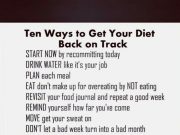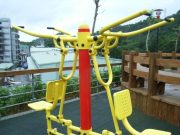Recovering from an injury can be a challenging journey, both physically and emotionally. It’s a time when your body demands rest, yet your spirit yearns for movement. Balancing the need for healing with the desire to stay active requires patience, creativity, and a compassionate approach to self-care. In this guide, we will explore practical strategies to help you maintain an active lifestyle while respecting your body’s need to recover. Whether you’re dealing with a sprained ankle, a pulled muscle, or recovering from surgery, these tips will empower you to stay engaged in physical activity, boost your mood, and enhance your overall well-being without compromising your healing process. Remember, your recovery journey is unique, and listening to your body is the key to a safe and effective path back to full strength.
Understanding Your Bodys Limits and Needs
Recovering from an injury can be a challenging time, but understanding what your body needs and recognizing its limits is crucial for a successful recovery. Listening to your body is the first step. Rest is not a sign of weakness, but rather a part of the healing process. It’s important to find a balance between activity and rest to avoid further injury.
- Listen to Pain Signals: Pain is your body’s way of telling you that something is wrong. If you feel pain while doing an activity, stop immediately and rest.
- Adapt Activities: Modify exercises to accommodate your current physical state. For example, if running is too strenuous, consider walking or swimming as alternatives.
- Prioritize Nutrition: Eating a balanced diet helps in the recovery process by providing your body with essential nutrients.
Understanding your body’s limits also means knowing when to seek professional help. Consulting with a physiotherapist or healthcare provider can provide you with personalized guidance. Here’s a simple guide to help you decide when to seek help:
| Signs | Action |
|---|---|
| Persistent Pain | Consult a healthcare provider |
| Swelling | Apply ice and rest, then seek advice if it persists |
| Limited Mobility | Consider physical therapy |
By tuning into your body’s signals and respecting its limits, you can find ways to stay active that support your recovery, rather than hinder it. Remember, the journey to recovery is just as important as the destination.

Choosing Low-Impact Activities for Gentle Recovery
Recovering from an injury doesn’t mean you have to give up on staying active. In fact, engaging in low-impact activities can be a beneficial part of your healing process. These activities allow you to maintain mobility, improve circulation, and enhance your mood without putting undue stress on your recovering body.
- Swimming: This is a fantastic option as the buoyancy of the water supports your body weight, reducing strain on your joints and muscles while allowing you to build strength and flexibility.
- Yoga: Opt for gentle styles such as Hatha or Yin yoga, which focus on slow movements and deep stretches, helping to improve balance and promote relaxation.
- Cycling: Using a stationary bike can provide a low-impact cardiovascular workout that boosts your heart rate without the risk of falls or joint impact.
To help you choose the right activity, consider the table below which outlines various low-impact exercises and their benefits:
| Activity | Primary Benefit | Considerations |
|---|---|---|
| Swimming | Full-body workout | Access to a pool is required |
| Yoga | Flexibility & relaxation | Choose a gentle class |
| Cycling | Cardiovascular health | Use a stationary bike for safety |
When selecting an activity, listen to your body and consult with your healthcare provider to ensure that your choice supports your recovery journey. With patience and persistence, you can stay active and promote healing simultaneously.

Incorporating Mindfulness and Breathing Techniques
During the recovery phase, integrating mindfulness and breathing exercises can be transformative, not only for your mental well-being but also for your physical recovery. Mindfulness helps you stay present and attentive to your body’s needs, while breathing techniques can enhance relaxation and focus. Here are some ways to incorporate these practices into your recovery routine:
- Body Scan Meditation: This practice involves mentally scanning your body from head to toe, paying attention to any areas of tension or discomfort. It helps in recognizing and addressing any physical strain that might be hindering your recovery.
- Deep Breathing: Engage in diaphragmatic breathing, where you breathe deeply into your belly rather than your chest. This technique can reduce stress and promote better oxygen flow, aiding in the healing process.
- Guided Imagery: Use mental imagery to envision your body healing and becoming stronger. This positive visualization can boost your motivation and foster a more resilient mindset.
For a more structured approach, consider the following breathing exercises and their benefits:
| Technique | Description | Benefits |
|---|---|---|
| 4-7-8 Breathing | Inhale for 4 seconds, hold for 7 seconds, exhale for 8 seconds. | Reduces anxiety, promotes calmness. |
| Box Breathing | Inhale, hold, exhale, and hold each for 4 seconds. | Improves focus, lowers stress. |
These techniques can be easily practiced at home or even during short breaks throughout your day. Embrace this time as an opportunity to connect with your body and mind, nurturing both towards a holistic recovery.

Setting Realistic Goals and Celebrating Small Wins
Recovering from an injury can be a challenging journey, but setting realistic goals and celebrating small victories along the way can make a significant difference. Start by breaking down your recovery process into manageable milestones. This approach not only helps maintain motivation but also ensures that you’re not overexerting yourself, which can lead to setbacks. For instance, if you’re healing from a knee injury, your initial goal might be as simple as walking comfortably for five minutes. Once achieved, you can gradually increase the time and intensity.
- Consult with your healthcare provider to set achievable goals.
- Listen to your body and adjust your activities accordingly.
- Document your progress to visualize improvement over time.
Remember to acknowledge and celebrate each small win, no matter how minor it may seem. Recognizing these achievements can boost your morale and keep you motivated throughout the recovery. You might consider maintaining a journal or using a digital app to track your progress. Celebrate milestones like walking pain-free or completing a physical therapy session with ease. These celebrations can be simple rewards, such as treating yourself to a favorite meal or enjoying a relaxing activity.
| Milestone | Celebration Idea |
|---|---|
| First Pain-Free Walk | Enjoy a relaxing bath |
| Completing a Therapy Session | Watch a favorite movie |
| Reaching a New Mobility Level | Buy a small gift for yourself |








































